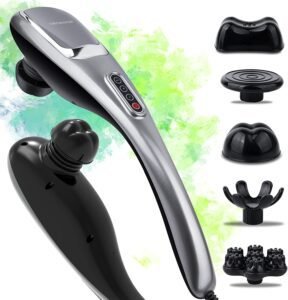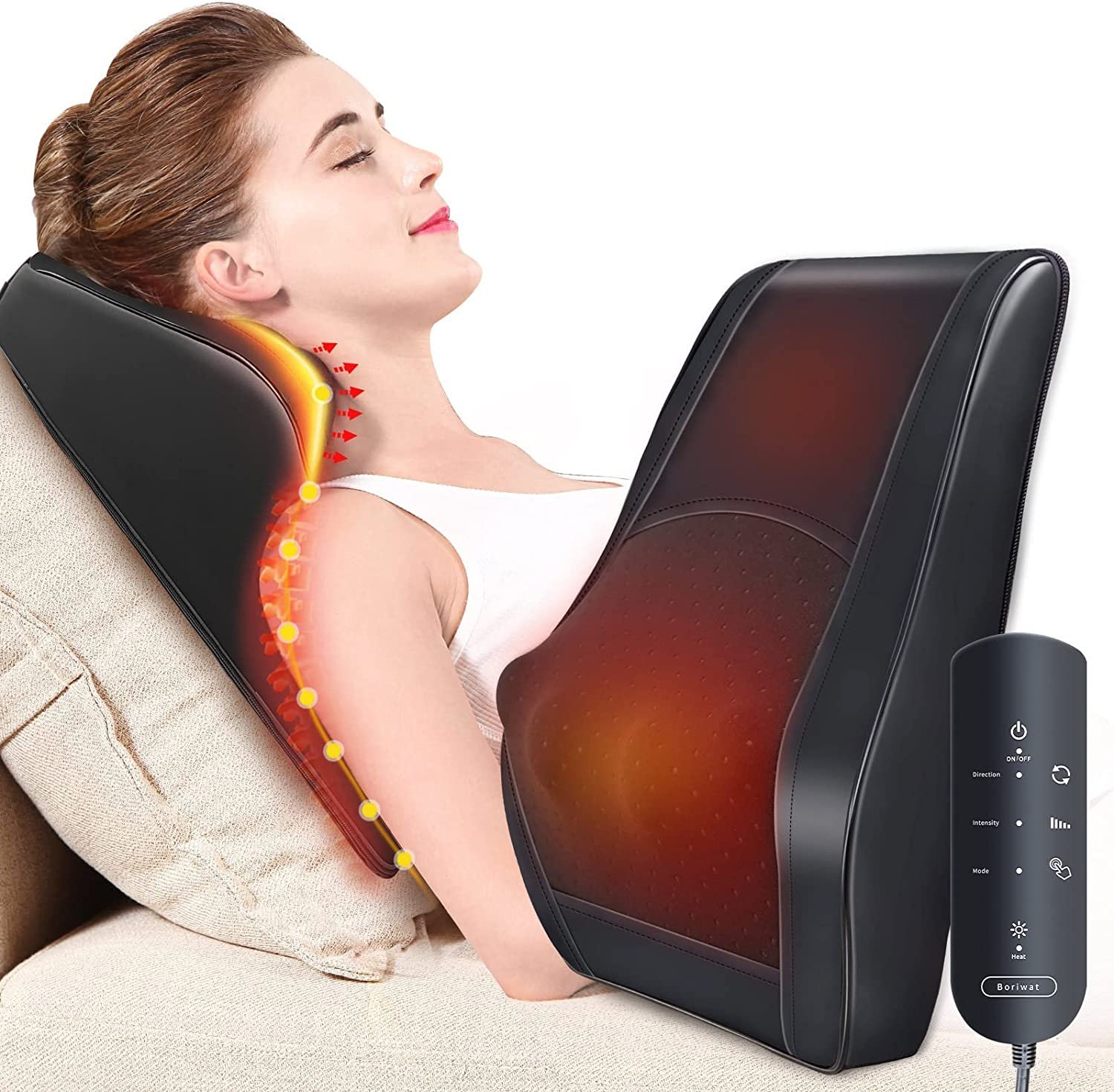Do you want to use an electric massager but are worried about its compatibility with your pacemaker? As the popularity of electric massagers grows, it’s essential to understand the safety precautions to take when using them, especially if you have a pacemaker. We will dive into the matter in this blog article and provide helpful insights and tips to help you make an informed decision about weather you can use an electric massager with a pacemaker or not.
A pacemaker is a typical medical solution for people with specific heart problems. It is fundamental in regulating cardiac rhythms and supporting proper cardiovascular function. However, when introducing external devices like electric massagers into the equation, exploring potential interactions and ensuring your safety is imperative. In this comprehensive guide, we will discuss potential risks and provide recommendations for the safe usage of electric massagers for people with pacemakers.
Can You Use an Electric Massager With a Pacemaker?
Table of Contents
You can use an electric massager with a pacemaker in most situations. However, it is important to seek personalized advice from your healthcare expert or pacemaker manufacturer, depending on your medical situation. While electric massagers are typically safe, but particular risks are associated with using these devices for those with pacemakers.
Safety Considerations When Using Electric Massager with a Pacemaker
To protect your safety, using an electric massager while wearing a pacemaker requires careful thinking and respect for safety recommendations. Understanding potential risks and talking with a medical professional before adding these devices to your self-care routine is critical.
1. Consultation with Healthcare Professionals:
The first and most important step is to speak with your healthcare professional, preferably your cardiologist or the healthcare team in charge of your pacemaker. They have the knowledge and skills to examine your distinctive condition and give personalized recommendations on using electric massagers. Their advice considers your cardiac condition, pacemaker type, and any potential dangers or restrictions.
2. Potential risks:
While electric massagers are typically safe for most people, there are some risks associated with using them if you have a pacemaker. The primary concern is the interaction between the electromagnetic fields generated by electric massagers and the functioning of the pacemaker. In rare situations, these fields may interfere with the pacemaker’s proper operation, potentially resulting in irregular cardiac beats or malfunctions.
3. Instructions from Pacemaker Manufacturers or Medical Experts:
Pacemaker manufacturers and medical experts frequently give detailed instructions for using electric massagers. This guidance may include suggestions to keep a safe distance between the massager and the pacemaker site, to avoid placing the massager directly over the pacemaker, or to avoid using particular types of massagers entirely. To ensure your safety, familiarize yourself with these instructions and strictly follow them.
4. Pacemaker Programming and Monitoring:
Pacemakers are precisely designed to match the demands of each person. An electric massager may need additional modifications or monitoring to ensure the pacemaker functions properly. Any changes in your self-care practice, including using electric massagers, must be reported to your healthcare provider. Regular pacemaker checks allow them to evaluate its performance and make any required changes.
You can make informed decisions about using electric massagers with your pacemaker if you prioritize safety and seek professional assistance.
Read: Does Hydromassage Burn Calories?
Potential Interactions between Electric Massagers and Pacemakers

Understanding how electric massagers and pacemakers interact is important for assessing compatibility and protecting safety. While most people with pacemakers may use electric massagers safely, it’s essential to be aware of special issues and take appropriate precautions.
Electromagnetic Fields:
As part of their functioning, electric massagers produce electromagnetic fields. Because pacemakers are sensitive electrical equipment, these fields can potentially interfere with their normal operation. The proximity and strength of electromagnetic fields can impair the pacemaker’s capacity to detect and respond to electrical signals from the heart.
Handheld Electric Massagers:
Due to their proximity to the pacemaker site, handheld electric massagers may represent a higher risk of interference. It is suggested to keep a safe distance between the massager and the place of pacemaker implantation. This can assist in reducing the possible influence of electromagnetic fields on pacemaker operation.
Massage chairs, on the other hand, frequently generate bigger energy fields. While the potential of interference is smaller than with portable massagers, it is recommended that you check with your healthcare provider. They can provide particular suggestions based on the type of massage chair and the specifics of your pacemaker.
Personalized Recommendations:
The interactions between electric massagers and pacemakers might vary based on the pacemaker’s precise make and model, the type of massager utilized, and individual sensitivity variations. It is vital to check with your healthcare expert or pacemaker manufacturer for specific advice. They may examine your specific circumstances and give advice geared to your specific requirements.
Remember that pacemaker programming and monitoring are essential to maintaining the device’s proper operation and safety. Regular check-ups with your healthcare team allow them to assess the pacemaker’s performance and make any required changes.
- 💞 Mega Performance💞 Advanced 3,600rpm motor runs quietly to massage up to 8mm below the skin! This percussive massager pumps 3,600 pulses per minute, penetrating sore&stiff muscles to relieve body pains. With enhanced noise reduction technology, the improved model is quieter than most of its competition. For a fraction of the cost of going to a massage therapist, you would not regret choosing this powerful product.
- 💞 Mega Ease and Safety💞 It allows you to massage with maximum ease. Unlike other massagers, its safety knob prevents injuries during vibration. Additionally, its 15-minute automatic shut-off timer further ensures this product’s safety and prevents overheating.
Alternatives to Electric Massagers for People Who Have Pacemakers
Several options are available for individuals with pacemakers who want to prioritize their safety and explore alternative methods of relaxation and muscle relief. These alternatives can offer similar advantages to electric massagers while avoiding risks associated with electromagnetic interference. Consider the following alternatives:
Manual Massagers:
For example, handheld massage tools or foam rollers might be good alternatives to electric massagers. These instruments let you physically apply pressure and move your muscles, resulting in specific relief and relaxation. They are typically safe for those who have pacemakers since they do not produce electromagnetic fields. Consult your healthcare provider to get the perfect manual massager for your needs.
Therapeutic Stretching activities:
Including therapeutic stretching activities in your daily routine can help relieve muscular tension and promote relaxation. Stretching can be done in various ways, including yoga, Pilates, or stretches prescribed by a physical therapist. Choose stretches appropriate for your fitness level and get advice from your healthcare practitioner or physical therapist.
Read: Massage Gun vs. Stretching: Which is Better
Heat Therapy:
Hot packs or warm baths can be an excellent technique to relax muscles and relieve stress. Heat can assist in enhancing blood flow and induce relaxation in affected areas. It’s important to use caution when applying heat and ensure the temperature is comfortable and safe for your pacemaker.
Manual Massage Therapy:
Hiring the services of a qualified massage therapist who is familiar with pacemakers is a wonderful option. Professional massage therapists may deliver focused massages tailored to your demands while maintaining your pacemaker’s safety. Inform the therapist about your pacemaker and any measures that must be followed before arranging a session.
Stress Reduction Techniques:
Stress management is critical for general well-being and muscular relaxation. Stress-reduction practices such as deep breathing exercises, meditation, or mindfulness exercises can assist in quieting the mind and relaxing the body. These techniques can be performed alone or under the supervision of a competent instructor or therapist.
Always consult your healthcare practitioner or the manufacturer of your pacemaker before attempting any new relaxation techniques or alternatives.
Conclusion:
To summarize, using an electric massager with a pacemaker requires mindful consideration and adhering to security precautions. While electric massagers can give relaxation and therapeutic advantages, it is critical to prioritize your safety and seek individualized guidance from healthcare specialists.
Before introducing electric massagers into your daily routine, talk to your doctor or the manufacturer of your pacemaker to learn about any potential hazards or limits. Follow their guidelines for safe distances, avoiding direct contact with the pacemaker site, and beginning with low-intensity settings.
Read: Side Effects of Eye Massager
Regular pacemaker check-ups and open communication with your healthcare team are essential for monitoring pacemaker function and making appropriate modifications. Stop using the product and seek medical treatment if you notice any unexpected symptoms or pain.


